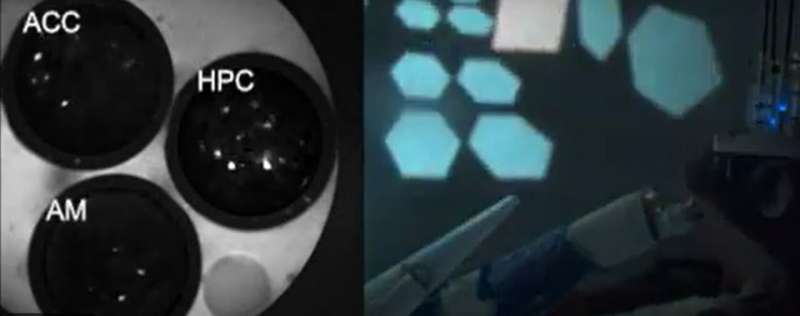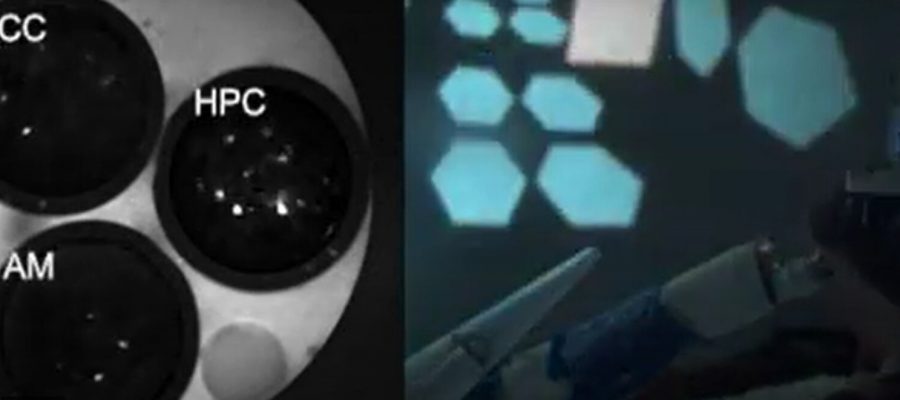
We have a pretty good idea of where memory starts and ends—short-term memories form in the hippocampus and, if the situation calls for it, stabilize into long-term memories in the cortex. But what happens along the winding path between short-term to long-term memory is a mystery.
Now, a new study published in Cell identifies the anterior thalamus as a brain region linking hippocampus and cortex that is key to the memory consolidation process. “The findings provide traction toward understanding how transient memories reorganize across the brain to progressively more enduring forms,” says Rockefeller’s Priya Rajasethupathy.
New problems, new tech
The standard model for memory consolidation holds that the hippocampus forms new memories and, over time, trains the cortex to store enduring memories. But scientists trying to figure out how that happens have been stymied by technological limitations.
In order to figure out what happens between the hippocampus’ short-term work and the cortex’s long-term payoff, scientists would need to record the intervening parts of an active, thinking brain over many weeks. But while electrophysiology studies can capture multiple brain regions at once, they cannot do so for weeks at a time. And while conventional microscopes can record brain activity for weeks, they can generally only focus on a narrow region of the brain.
“We wanted to watch how a memory changes in the same mouse, in the same neurons, over time,” says Andrew C. Toader, an MD/Ph.D. student in Rajasethupathy’s lab and co-author of the study. “So we had to develop technology to observe neurons in intervening areas between the hippocampus and cortex over weeks, tracking them and seeing how they change.”
Armed with this new technology, Rajasethupathy and her team began investigating how memories consolidate in mice. Since the mice would need to stay relatively still for weeks of imaging, the team had the mice run in place on an axially rotating styrofoam ball, akin to a treadmill, while viewing virtual reality mazes. The mice received very high rewards for making certain turns in the maze, while their other navigational decisions resulted in minor positive or negative feedback. One month later, the mice were still scampering solely toward those areas in the maze that had resulted in the high rewards, a clear indication that they only remembered decisions that had resulted in high payoffs.
“The key was that the mice could learn all three outcomes in the short-term—very high rewarding, low rewarding, and adverse—but only the high reward would be remembered a month out, because it was the most salient memory,” says Josue Regalado, a Ph.D. student in Rajasethupathy’s lab and co-author of the study. “That way, we could measure the differences in the neural circuit when recording memories that will be conserved.”
Spotlight on the anterior thalamus
The team found that the brain’s anterior thalamus appears to referee memory-consolidating interactions between the hippocampus and the cortex. While Rajasethupathy found this surprising—”the anterior thalamus hasn’t been a prominent part of memory consolidation models”—the finding also made some sense. She knew that humans with Korsakoff Syndrome suffer severe amnesia and memory loss, and happen to have lesions on the anterior thalamus.
Further investigation confirmed that the thalamus plays a key role in memory consolidation in mice. In two subsequent experiments, Rajasethupathy’s team found that inhibiting the thalamus disrupts the formation of long-term memories in mice and, conversely, boosting the thalamus takes memories that would not have otherwise been stored long-term, and makes them last.
“There are a lot of ways to make memories not happen,” Regalado says. “One of the major breakthroughs of this paper is that we show that manipulating the anterior thalamus is one way to increase the importance of a memory, and make the mice store it long-term.”
Future work from Rajasethupathy’s lab will investigate how exactly the thalamus contributes to long-term memory storage. “The question is what the thalamus does when a memory is valuable, and needs to be saved long-term, that it doesn’t do for less valuable memories,” she says. Rajasethupathy suspects that the thalamus provides regular reminders to the cortex until a memory goes from short-term to long-term. “The thalamus is in continuous dialogue with the cortex over weeks, saying ‘stabilize this,'” Rajasethupathy says. “Less salient memories drop off because the cortex isn’t getting a constant signal from the thalamus to keep this memory.”
Even then, the thalamus is likely only part of a developing story. “We don’t think the thalamus is the only region needed for memory consolidation, and we hope our findings will be blended with other models out there describing this intervening region,” she says. “Our findings—an intervening brain area that is definitively involved in memory consolidation in mice, and which is linked to human patients with memory disorders—provide an inroad for further research.”
More information:
Priya Rajasethupathy, Anteromedial Thalamus Gates the Selection and Stabilization of Long-Term Memories, Cell (2023). DOI: 10.1016/j.cell.2023.02.024. www.cell.com/cell/fulltext/S0092-8674(23)00167-8
Journal information:
Cell
Source: Read Full Article
